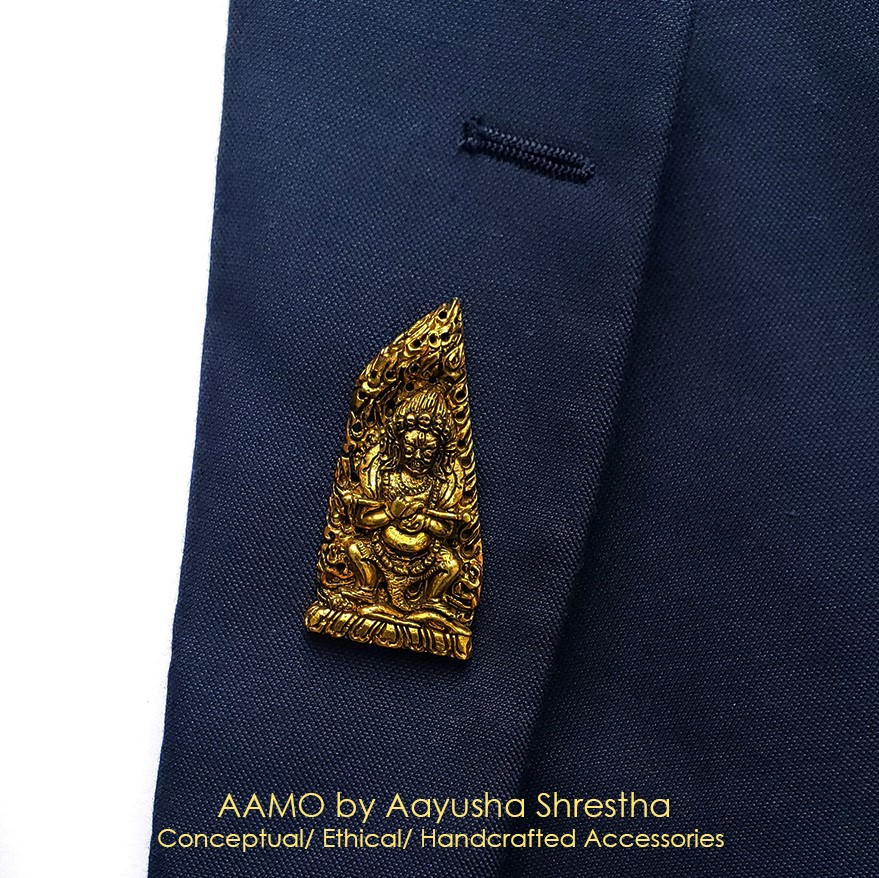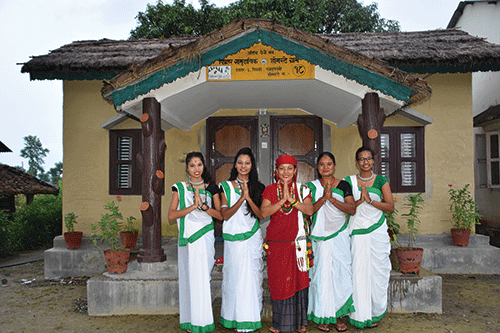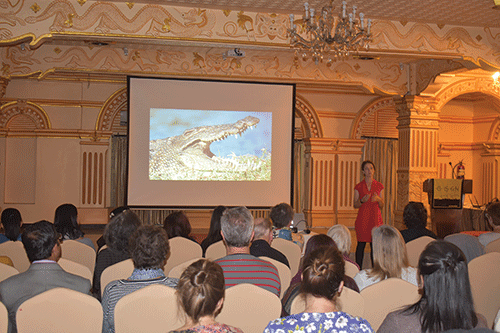Alone bugle sounded across the open field. Then the band master walked alone toward
the still and silent marching band. ‘Beating the Retreat’ was about to start at the National Stadium, and the audience held its collective breath. The conductor halted in front of the band, raised his baton and on the down beat the marching band began to play, treating the audience to a rousing rendition of ‘When the saints go marching in.’ It was an ironic selection, for ‘Saints’ is a traditional Christian gospel hymn usually played during funerals, now unwittingly being played in the (then) Kingdom of the Hindus. Nevertheless, the band received a standing ovation at the end of the show.
The Police Brass Band in Nepal dates back to the popular People’s Movement that restored King Tribhuvan to power in 1950 AD (2007 BS, on the Nepali calendar). As the authorities understood the importance of mass music, the Police Department established the first Police Brass Band with the assistance from the Army, who sent retired musicians on a posting basis to conduct music lessons and perform. The official date of its establishment is recorded as 1965 (2022 BS). At that time, General Kale Nepali, recently retired from the Army, was in charge of it. Forty-one years later, following the more recent People’s Movement in 2006 (2063 BS), the band was renamed Nepal Police Music Academy (NPMA).
Today, the NPMA has affiliated bands stationed in Biratnagar (in the eastern Terai), Bharatpur (mid-eastern Terai), Butwal (west), Nepalgunj (mid-west), and Dipayal (far west). The sub-stationed bands each have 31 players, and central band the Police Academy at Maharajgung has another 260 band members, for a grand total of 415 musicians nationwide. The Police Band functions under and is administered under the Police Academy. Currently, District Superintendent of Police (DSP) Rajendra Gurung is the principal of the academy. He is a retired Gurkha officer from the British Army, educated in music at London’s Kneller Hall Military School of Music.
At first, musician recruits to the police band had to undergo police training before becoming appointed as musicians. This created problems, and a number of recruits quit. Moreover, some of them only wanted in for the permanent job, and had little musical interest or ability. “There also was race discrimination, but things have changed now,” says DSP Gurung. “Of course, we would like them to be academically sound but at present we recruit personnel on the basis of the individuals interest in music. They are initially police trained, which is essential for discipline purposes; but after a year and a half, we solely devote them into music, which has made the modern Police Band better and more professional than its predecessors.”
The Police Music Academy trains recruits for more than one type of band, including a Concert Band, a Marching Band that includes the Bugle Band, Pipe and Drum Band, Mass Band, Marching Bugle Band, Traditional Naumati Baja Band, and a Cultural Troupe. The Concert Band consists of many musical instruments, but has come up to international standards with string instruments; thus, it is not a Symphonic Orchestra band, though it serves the purpose.
The Marching Band is normally assigned to state duties, but can also be assigned to other events. DSP Gurung explains: “The Police Band can be used for many purposes. Embassies, hotels, schools can ask for our services, but people still have not understood the importance of a brass band so that the only time the brass band is used is for weddings. We consider ourselves to be ambassadors of the nation, and as a unit we can introduce our country to other nations. The embassies can call up the band for their state events and we can play their special music or anthems. Hotels and schools can hire the concert band to entertain guests and teach the students the importance of team work. Nonetheless, we still find ourselves somewhat marginalized.”
The Nepal Police Music Academy also has a unique unit called the Naumati Baja Band. Naumati means nine musicians playing seven traditional instruments. They are two sanai (or shawm, a kind of flute), two narsingha (long curved brass horn), and one each karnal (long trumpet), dholaki (two-headed drum), tamko (small kettledrum), tama (military drum) and jhyali (cymbals). If there are only five musicians playing, it is known as panche baja, or five instrument band. The Cultural Troupe consists of musicians with a combination of Western and traditional instruments, from the electric guitar to the sarangi (traditional violin), from drums to madal (traditional skin drum), who sing and dance to traditional and Western music. The Pipe & Drum Marching Band is distinctive with bag-pipes brought all the way from Ireland and Scotland.
The NPMA depends on its own basic resources when it comes to writing the scores for all the instruments, especially Nepali tunes, but it is not up to par. “We do rely on musicals written by outside sources and can read and play the music correctly, but when it comes to Nepali tunes, it is not just possible to outline the score. We play by rote and we have to get by with it.” DSP Gurung then explains that the band can play Nepal’s new National Anthem at state events “but no one has until now written the correct score for a brass or an orchestra band. Just imagine how we are getting by! But we do our best with the modest resources we have”, he says.

More than just your usual lapel pins
The lapel pin is a men’s accessory worn on the lapel of the jacket which serves as a...










